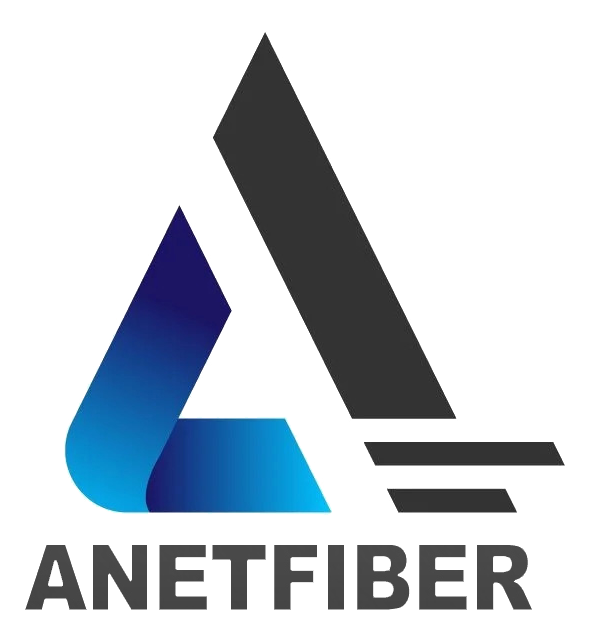Fiber Optic vs. Copper Cables: Analyzing the Pros and Cons

Understanding Fiber Optic and Copper Cables
When it comes to modern data transmission, Fiber Optic cables and Copper Cables play pivotal roles in ensuring seamless connectivity.
What Are Fiber Optic Cables?
The Basics of How They Work
Fiber Optic cables function by transmitting data in the form of light pulses through optically pure glass fibers. These fibers are incredibly thin, often as slender as a human hair, and are designed to carry information across long distances with minimal signal loss.
Common Uses in Today's World
In today's digital landscape, Fiber Optic cables are extensively used in telecommunications, internet connectivity, and high-speed data networks. Their ability to transmit large volumes of data at unparalleled speeds makes them indispensable for various industries.
What Are Copper Cables?
The Basics of How They Work
On the other hand, Copper Cables rely on electrical impulses to transmit data. These cables consist of twisted pairs of copper wires that facilitate the passage of electrical signals from one end to another.
Common Uses in Today's World
Despite the emergence of fiber optics, Copper Cables continue to be widely utilized for landline telephones, local area networks (LAN), and other applications where cost-effective connectivity solutions are preferred.
Fiber Optic Cables: Pros and Cons
As technology continues to advance, the debate between Fiber Optic and Copper Cables intensifies. Understanding the advantages and disadvantages of Fiber Optic cables is crucial for making informed decisions in network infrastructure.
Fiber Optic Advantages
Superior Performance Over Long Distances
One of the most significant advantages of Fiber Optic cables is their exceptional performance over extended distances. Unlike copper cables, which experience signal degradation over long runs, Fiber Optic cables maintain data integrity across vast networks. This makes them ideal for applications requiring reliable connectivity over expansive areas.
Higher Data Transmission Rates
Another compelling benefit of Fiber Optic cables is their ability to achieve higher data transmission rates compared to traditional copper counterparts. The use of light pulses enables these cables to transmit large volumes of data at unparalleled speeds, meeting the escalating demands of modern digital communication.
Fiber Optic Disadvantages
Higher Production and Installation Costs
While Fiber Optic cables offer remarkable performance, they come with higher production and installation costs. The intricate manufacturing process involved in creating optically pure glass fibers contributes to elevated production expenses. Additionally, specialized expertise is required for the meticulous installation of these cables, further adding to the overall investment.
Fragility and Handling Concerns
Fiber Optic cables are inherently delicate due to their composition of glass fibers. This fragility necessitates careful handling during installation and maintenance processes. Any undue stress or bending can result in signal loss or damage, making them more susceptible to physical disruptions compared to robust copper cables.
Copper Cables: Pros and Cons
In the realm of data transmission, Copper Cables continue to hold their ground as reliable connectivity solutions. Understanding the advantages and disadvantages of Copper Cables is essential for evaluating their suitability in diverse networking scenarios.
Copper Cables Advantages
Lower Initial Costs
One of the primary advantages of Copper Cables lies in their lower initial costs compared to fiber optic alternatives. The affordability of copper-based infrastructure makes it an attractive option for businesses and organizations seeking cost-effective networking solutions without compromising on performance.
Flexibility and Durability
Copper Cables are renowned for their inherent flexibility and durability, making them well-suited for various installation environments. Their malleability allows for easy maneuvering around corners and tight spaces, facilitating seamless deployment in diverse networking setups. Additionally, copper cables exhibit robustness against physical stress, ensuring sustained performance even in demanding operational conditions.
Copper Cables Disadvantages
Signal Loss Over Distance
Despite their widespread use, Copper Cables are susceptible to signal loss over extended distances. As data travels through copper wires, the electrical signals can weaken over prolonged runs, leading to degradation in signal quality. This limitation necessitates careful consideration of distance requirements when implementing copper-based networks to mitigate potential signal attenuation issues.
Susceptibility to Interference
Another notable disadvantage of Copper Cables is their susceptibility to electromagnetic interference (EMI) and radio frequency interference (RFI). External factors such as nearby power lines or electronic equipment can introduce unwanted disturbances into the transmitted signals, impacting network performance. Shielding techniques are often employed to minimize interference; however, this adds complexity and cost to the overall network infrastructure.
Fiber Optic vs. Copper Cables: The Final Verdict
Comparing the Pros and Cons
After delving into the advantages and disadvantages of Fiber Optic and Copper Cables, it becomes evident that each option offers distinct benefits and limitations, catering to varying networking requirements.
When to Choose Fiber Optic
Fiber Optic cables emerge as the preferred choice in scenarios demanding high-speed data transmission over extensive distances. Their unparalleled performance in maintaining data integrity across vast networks makes them indispensable for long-haul telecommunications, internet connectivity, and enterprise-level data networks. Moreover, applications requiring immunity to electromagnetic interference and future-proof infrastructure also warrant the adoption of Fiber Optic solutions.
In essence, Fiber Optic cables stand out as the optimal selection for organizations prioritizing reliable connectivity, high bandwidth capacity, and resilience against external signal disturbances.
When to Choose Copper
Conversely, Copper Cables present a compelling option for networking setups where cost-effective deployment and flexibility take precedence over extended distance performance. Small to medium-scale local area networks (LAN), voice communication systems, and short-span data connections can benefit from the affordability and adaptability offered by copper-based infrastructure. Additionally, environments with minimal exposure to electromagnetic interference may find copper cables to be a pragmatic choice for fulfilling networking needs without incurring substantial installation expenses.
Additional Considerations in Choosing Between Fiber Optic and Copper
When deciding between Fiber Optic and Copper Cables, several additional factors beyond the immediate pros and cons warrant careful consideration. These considerations delve into the long-term viability, environmental impact, and specific project requirements to ensure an informed decision.
Future-Proofing Your Network
The Role of Technology Evolution
As technology continues to advance at a rapid pace, future-proofing network infrastructure becomes paramount. Fiber Optic cables, with their ability to accommodate higher bandwidth demands and immunity to electromagnetic interference, offer a more future-ready solution. The evolving landscape of digital communication necessitates a robust foundation that can adapt to emerging technologies seamlessly.
Environmental Factors
Weather and Physical Environment Impact
The environmental conditions in which the network will operate play a crucial role in determining the suitability of cable types. While Copper Cables exhibit resilience in various weather conditions, Fiber Optic cables prove more resistant to temperature fluctuations and moisture ingress. Additionally, physical environments prone to electromagnetic disturbances may benefit from the inherent immunity of fiber optic solutions.
Specific Needs of Your Project
Assessing Your Data Transmission Requirements
Understanding the unique data transmission requirements of your project is essential in making an informed choice. Projects demanding high-speed data transfer over extended distances align well with the capabilities of Fiber Optic cables. Conversely, applications with shorter distance connectivity needs and cost-sensitive deployment may find Copper Cables to be a pragmatic fit without compromising on performance.
In summary, evaluating the future adaptability of network infrastructure, considering environmental influences, and aligning cable choices with specific project demands are pivotal steps in choosing between Fiber Optic and Copper Cables.
It's important to consider how technological advancements may impact your network's requirements.
Evaluating environmental factors can help determine the resilience needed for your chosen cable type.
Assessing your project's data transmission needs is crucial for selecting the most suitable cable solution.


